DC United occupy ninth place in the Eastern Conference of MLS at the time of writing, with 30 points after 24 rounds.
EPL legend Wayne Rooney’s side have scored nine goals from set pieces out of a total of 32 goals in this season of MLS with a rate of about 28%, so we can observe how they depend on set-pieces and how deadly they are at this side of the game.
DC United occupy third place for goals from set pieces in this MLS season. Evidently, they have done a good job of exploiting attacking corners. They occupy first place in scoring corners in the MLS with Los Angeles Football Club, Atlanta United and New England on six goals each.
This tactical analysis will discuss the most important tactics of DC United from attacking corners that make them very strong in set pieces and how they exploit the superiority of their excellent players in aerial duels.
Packs and stacks
Let’s start with packs and the primary purpose of them. Teams usually use packs to make their attacking players close together, which helps in blocking and screens to free the targeted player from his man marker.
In the first photo, we can see the opponent’s defending system, which is man-marking with only two zonal players in green, the target area in black and a pack of five players near the edge of the box. We will follow these five players and how each one acts in the upcoming photos.
In the second photo, the green-highlighted player moves, with his man, to the near post to take their attention, making them leave the target area behind them; the yellow-highlighted player moves to the rebound zone dragging his marker out of the box.
The third photo shows a 3v3 situation now, and our targeted man is in green with his marker. In the fourth photo, he, in yellow, runs in a curved path around his teammates, in green, and then the only way for his marker to follow him is the curved yellow path. We also note the red player moving away from the targeted area to attract his marker’s and the goalkeeper’s attention.
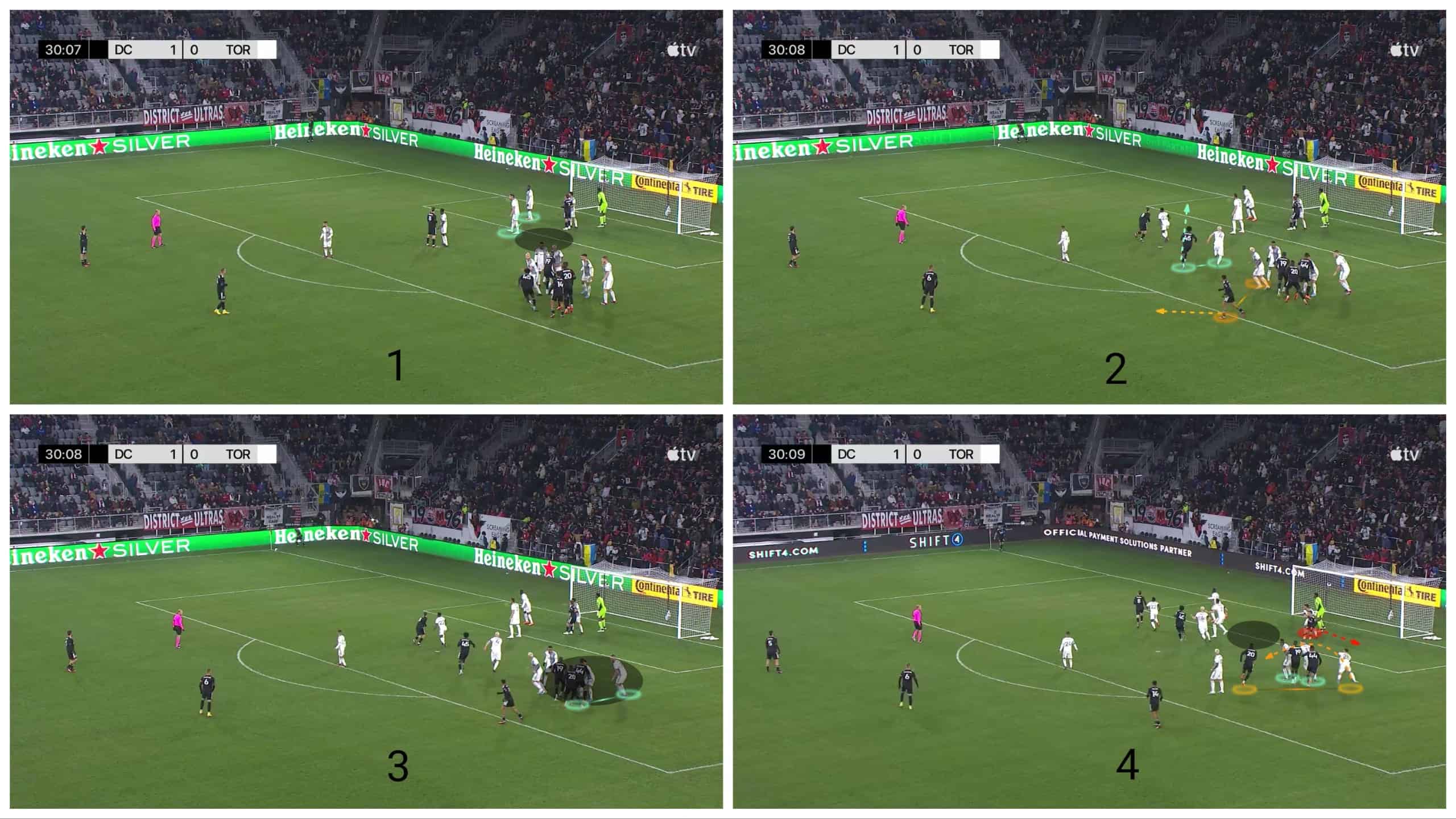
The plan worked, but the cross is a little short, so the green zonal player, who also reads the situation and doesn’t move away from his area despite the moves in front of him, gets the ball.
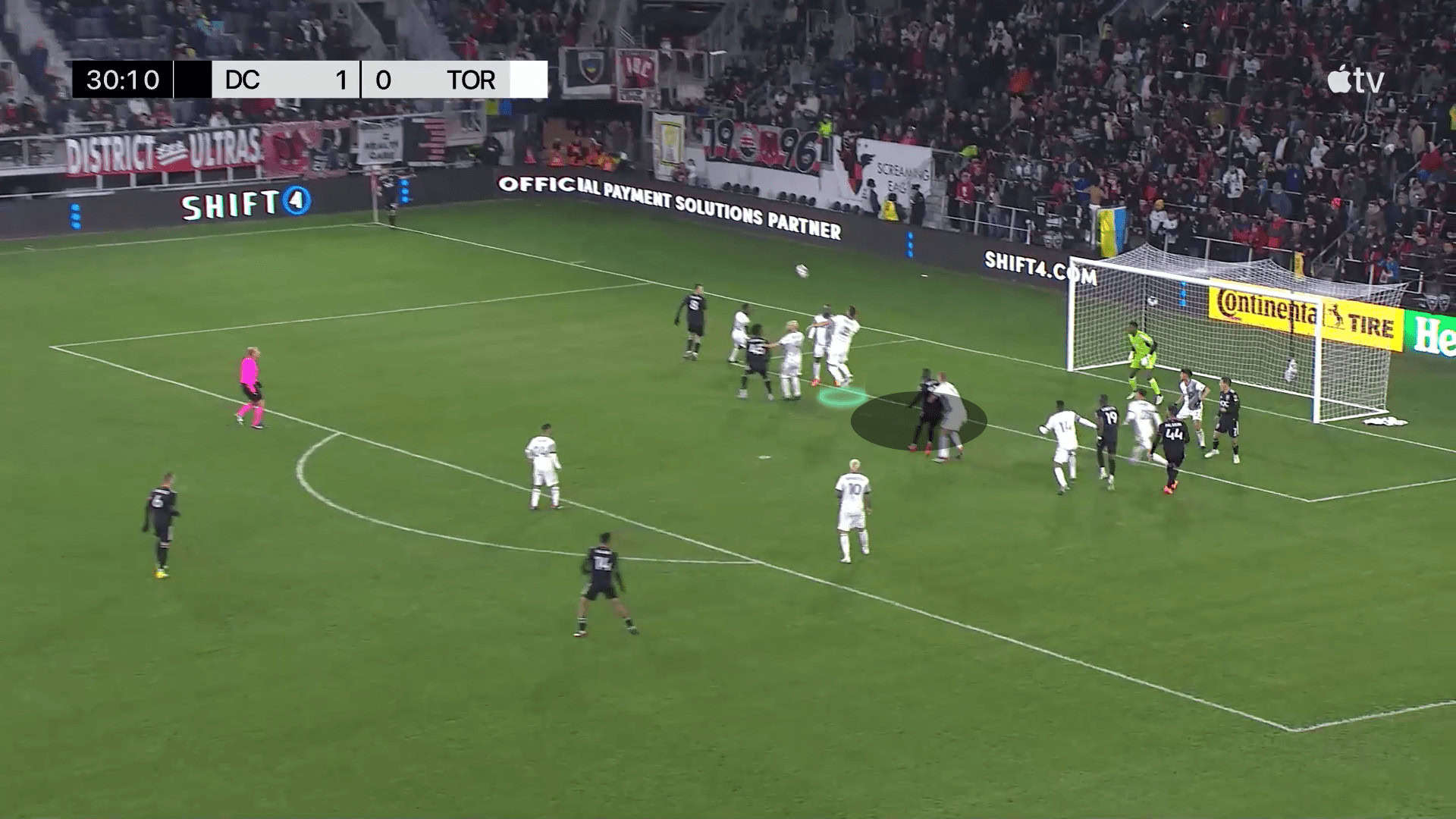
We move to the purpose of stacks. They use stacks to make the markers confused because they don’t know the direction that every player will go, so the attackers usually reach the targeted area a few seconds before their opponents.
The first photo shows the man-marking system with two green zonal markers and the three players stacked in black. In the second photo, we see the targeted area, in black, and the targeted player, in yellow, who is the third man in the stack. The player with the green arrow moves before the zonal player to remove his attention from the targeted area.
In the third photo, the green defender is the player who should follow the stack’s player who takes the right direction, our target area. Still, the targeted player, Donovan Pines, moves from a long distance far from him which makes it easy for him to jump, exploiting his ability in aerial duels. In the fourth photo, we can see this mismatch, where he is in the air while his green marker is still on the ground. There is also an additional note in the same photo, which is the movement of the yellow player to get the ball while the attention of his marker is on the ball.
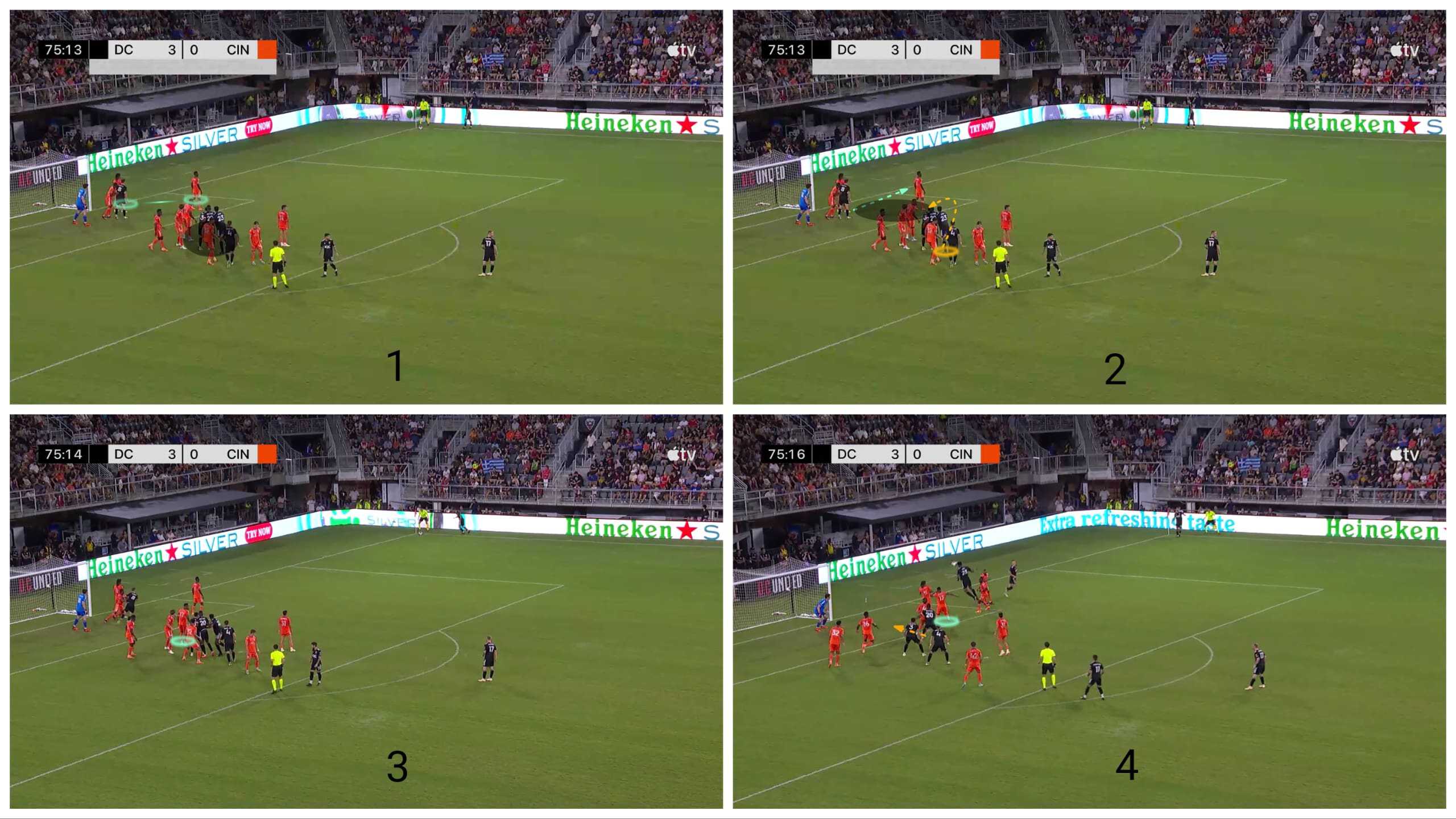
He gets the ball, but behind him, so he can’t play it correctly, as shown below.
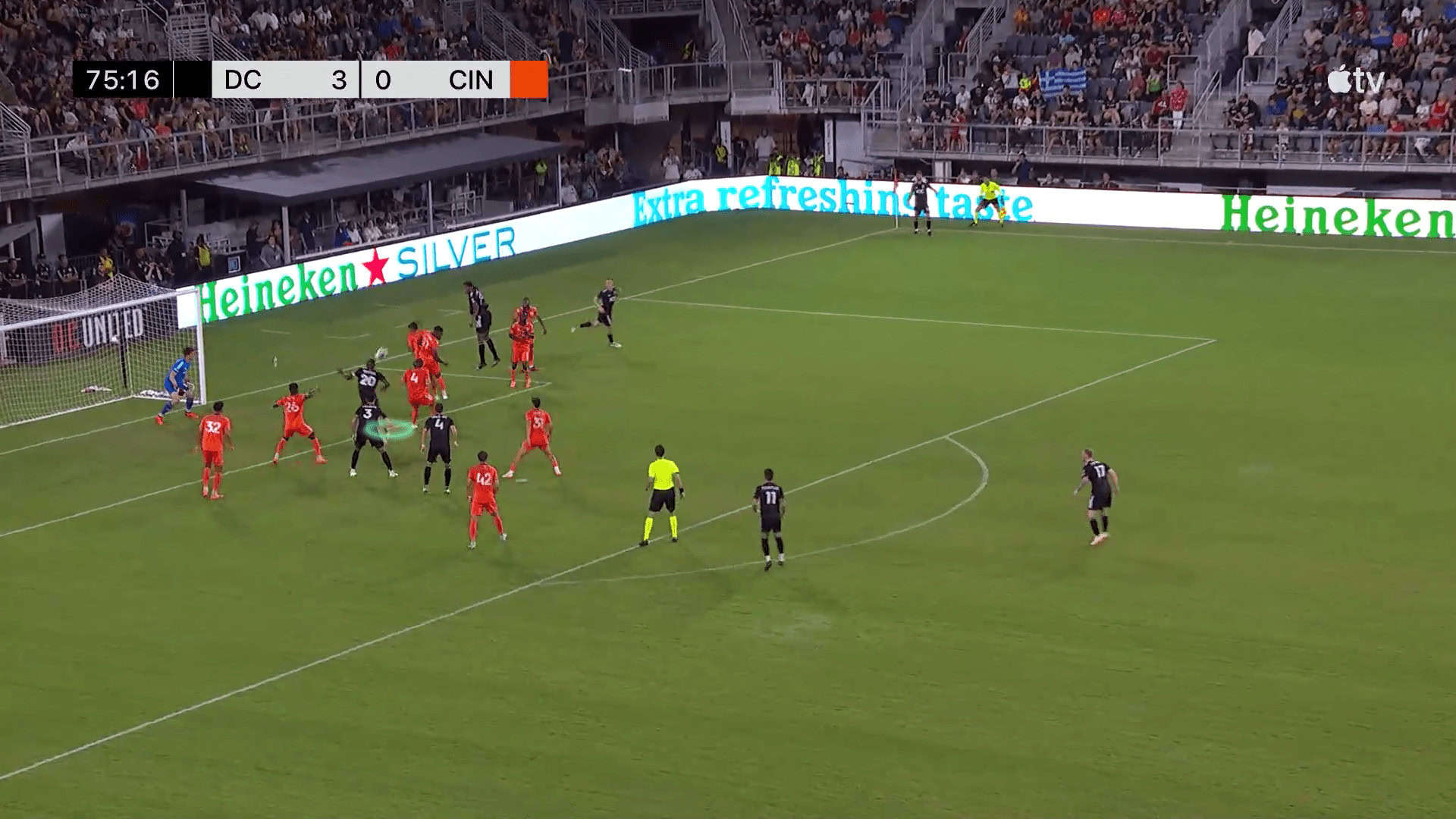
Here, we can notice the movement mismatch well because the green stack stands so far on the edge of the box, so there is a long distance the targeted man takes to the target area, in black, as shown in the first photo. In the second photo, the same targeted player, in yellow, runs to the targeted area, so his marker runs with him. Still, this long distance that he takes makes it easy for him to exploit his physical superiority hitting his marker with his shoulder, making him on the ground, as shown in the third photo. The result is a goal, as shown in the fourth photo.
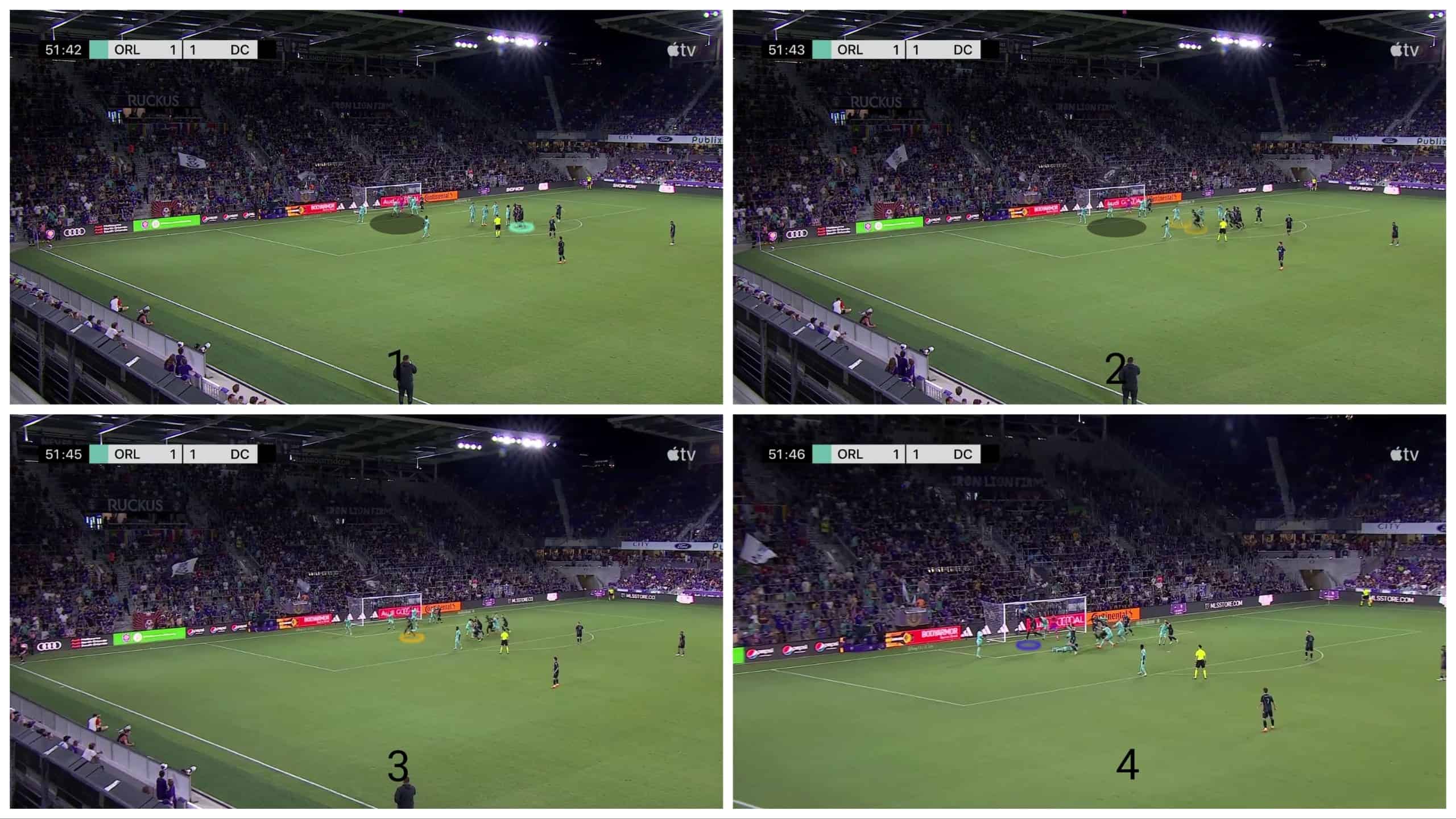
Floated crosses
They are deadly good at using floated crosses, especially against zonal and hybrid defending systems, which have many benefits because of the long time the ball takes in the air. They prefer to use floated crosses to allow their distinguished players, who stand a little away from the defence, to estimate the ball in the air and jump from a movement position, making it more difficult for the defenders causing a mismatch. The defenders also have this time and use blocks to isolate their targeted man.
One of the best benefits of floated crosses is that even if the cross were inaccurate, it would become an aerial fight, and they have many players who are excellent at predicting the ball’s path and have superiority in any aerial duel, especially Steve Birnbaum, Donovan Pines and Christian Benteke.
In the first photo, Inter Miami defends with five green zonal players and four yellow man markers, noting that they have a player who got a red card. In the black area, there are three players away from the defence. In the second photo, the two green players’ job is to take the two markers away to empty the area for Steve Birnbaum, in blue, who is the best in predicting the ball’s path and has excellent power to jump.
In the third photo, while the ball is in the air, highlighted in green, the two red defenders have the time, leaving one attacker moving to the one on the ball’s side. Still, he is the fake attacker, as we said, and this is also an orientation advantage because the defenders can’t see the ball, especially in such a high position, and the opponent behind them, in blue, at the same time. In the fourth photo, when the ball gets closer, the defenders, in green, look at their backs, but they take time which is enough for the blue attacker while all players watch the ball leaving the far post to the yellow-highlighted player.
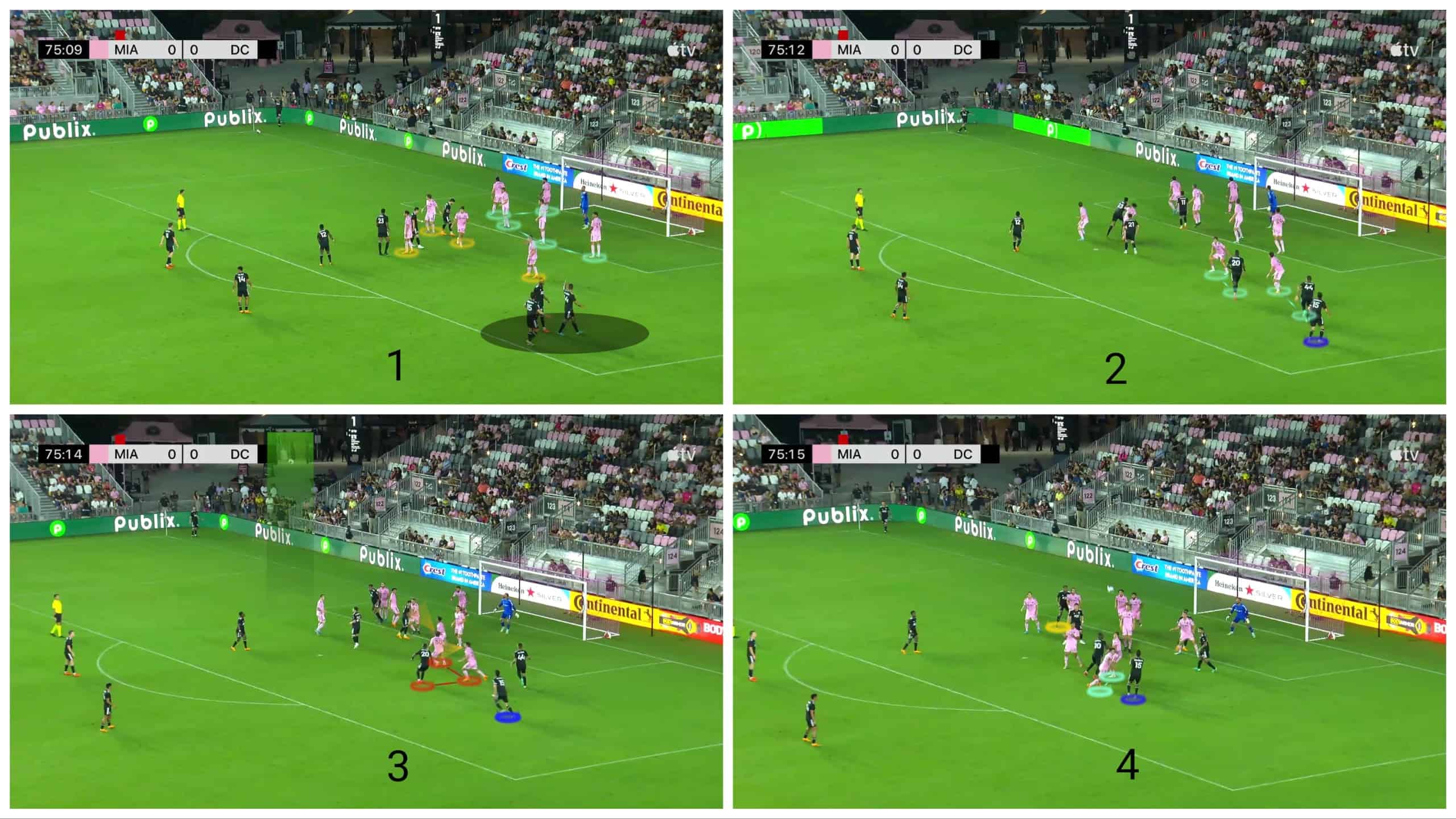
The attacker scores a goal at the back of his marker, who was looking at the first headed pass, as shown below.
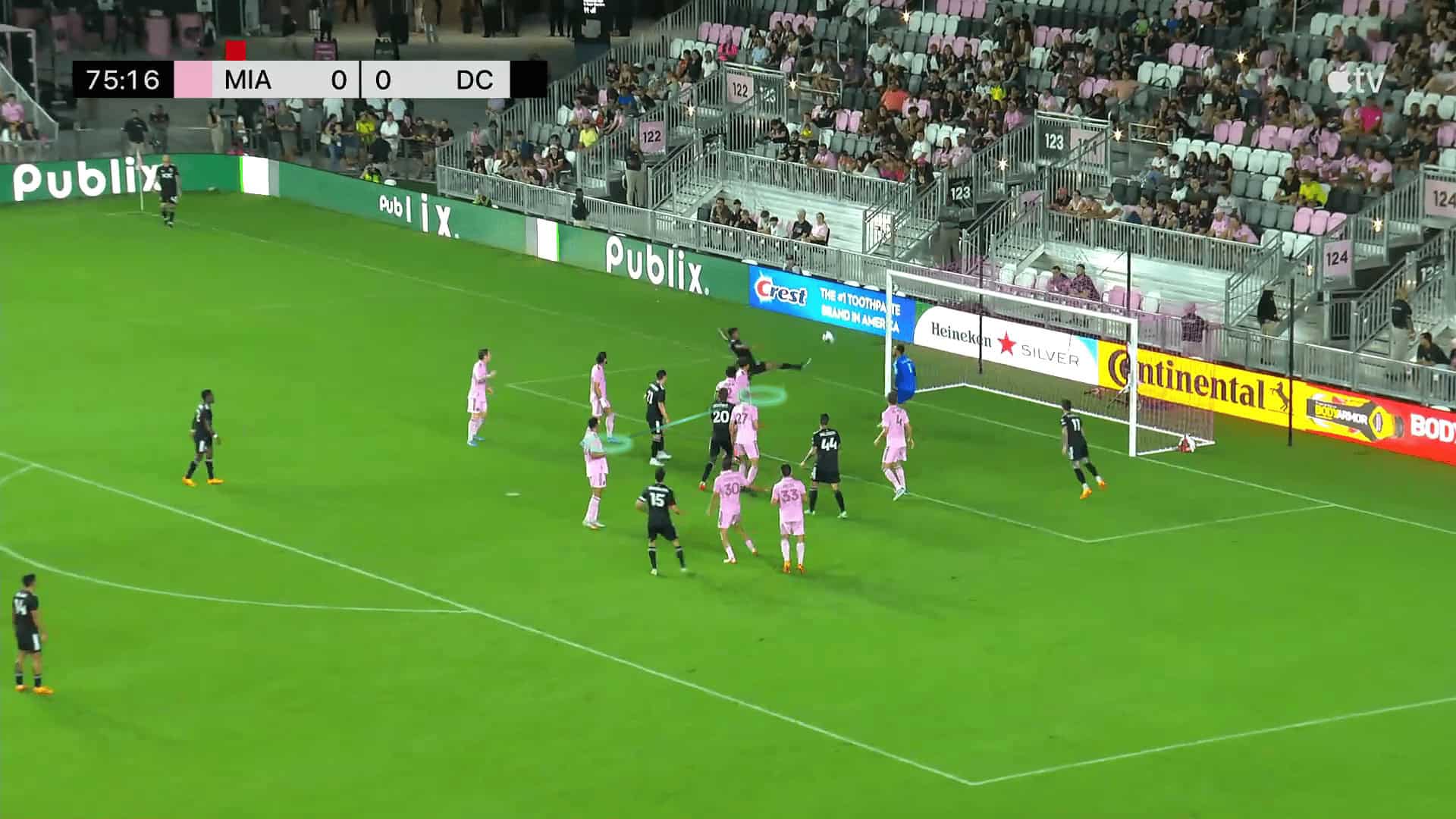
We said that even if the cross were inaccurate, it would become an aerial fight, and this is what happened in this case in which the cross is supposed to be to the player in the black area using the two green attackers to block any opponent trying to get him as shown in the first photo. In the second photo, the ball is in the air, so the attacker, in green, who is responsible for blocking, can predict the black landing area, then he doesn’t stick to the plan and runs to this area, in green arrow.
He can get the ball in the third photo because floated crosses give players time to exploit their physical and timing aerial abilities, but the goalkeeper catches the ball as in the fourth photo.
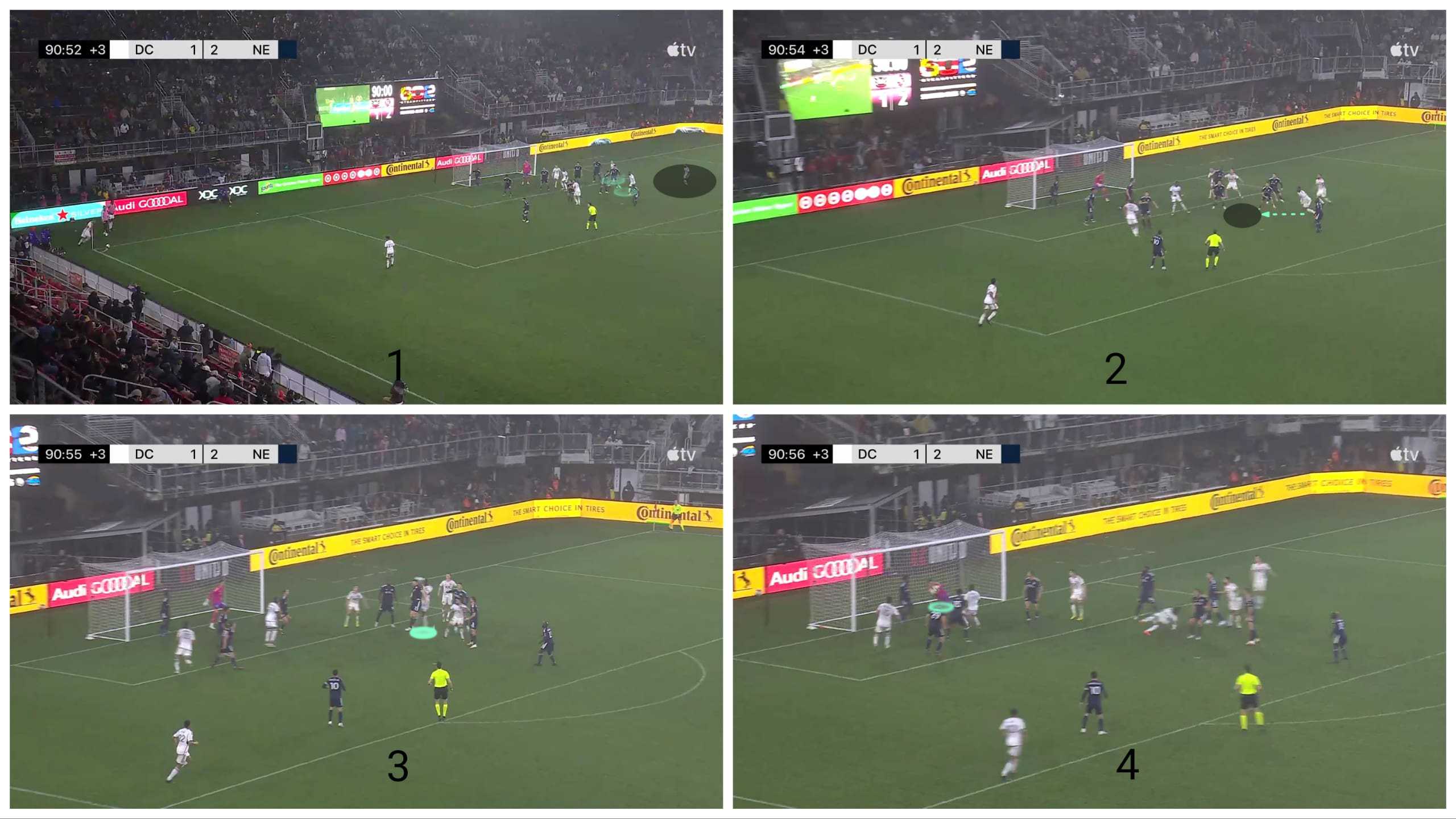
They have another trick to make their targeted player without marking, which gives him the time to wait for the floated cross more freely.
In the first photo, the targeted player, in green, acts as he waits for the rebound, but while the ball is in the air, he exploits this time to attack the targeted area with the help of his yellow teammate, who blocks any defender moving to him.
In the second photo, his green teammate blocks the opponent who can move toward him, leaving only the yellow rebound defender who steps back, trying to track the ball in the air, as shown in the third photo.
In the fourth photo, the green defender measures the ball incorrectly, so the targeted player nods the ball easily, with the help of the yellow block, to the player, with the green arrow, at the defender’s blind side.
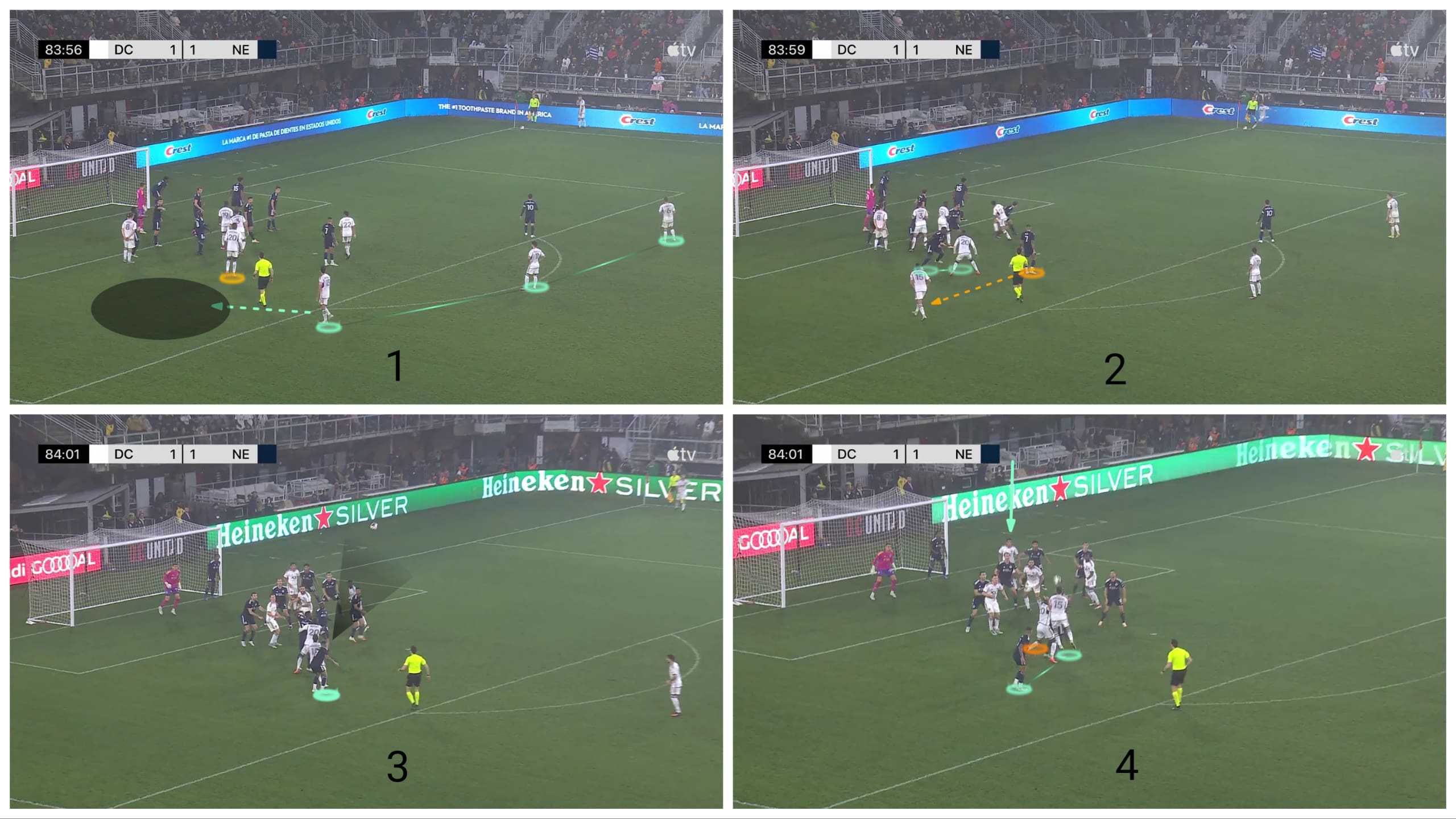
The plan worked, but the headed shot is terrible, as shown below.
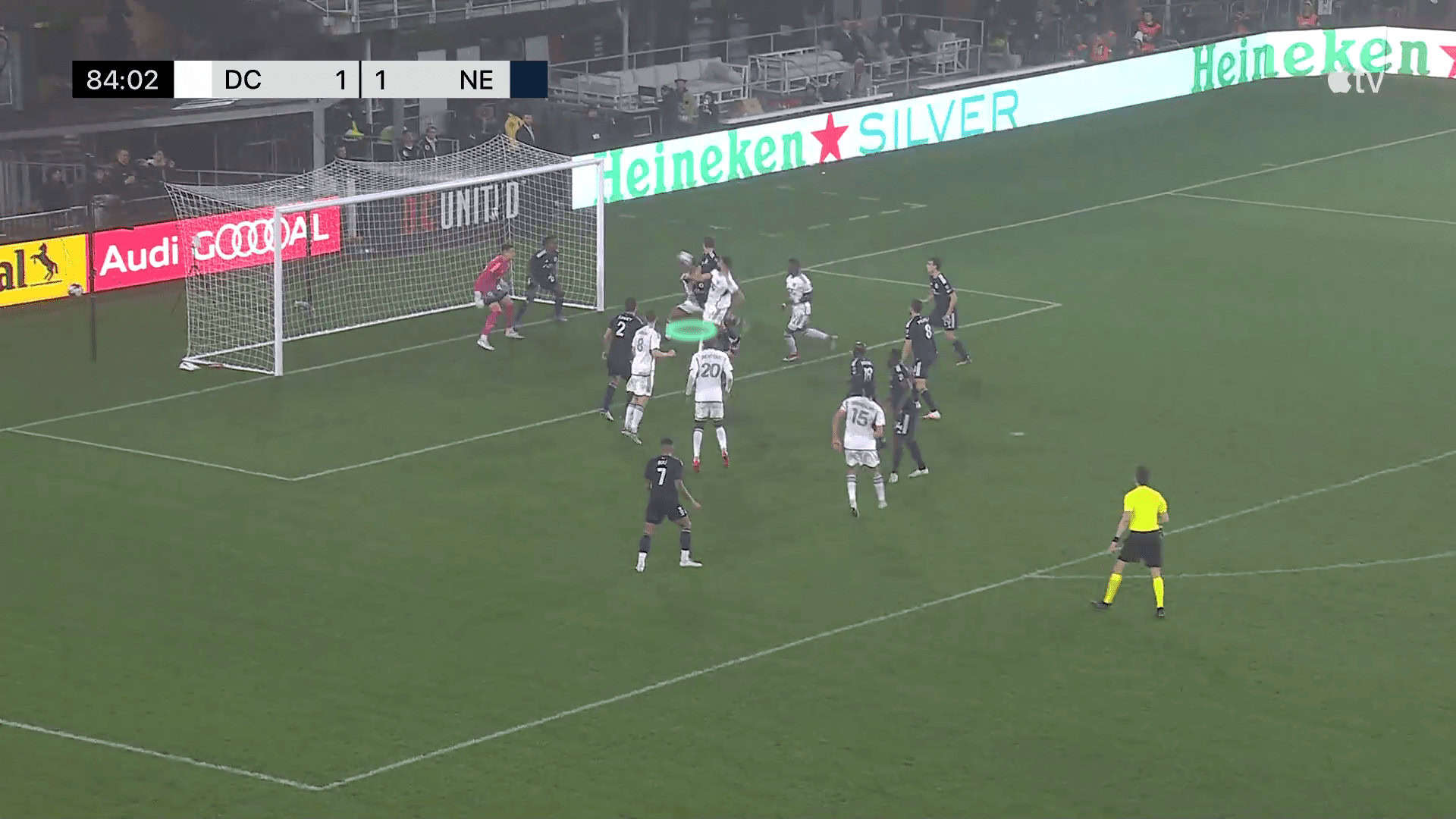
They also use floated crosses for a direct shot by making players remove their markers from the targeted area, as shown in the first photo. In the second photo, the targeted player starts at a far position to have a long distance to do feints showing his ability in aerial duels alone with his marker, which is called isolation. In the third photo, he jumps from movement, having excellent momentum, so the mismatch is apparent, but the headed shot is next to the post, as shown in the fourth picture.
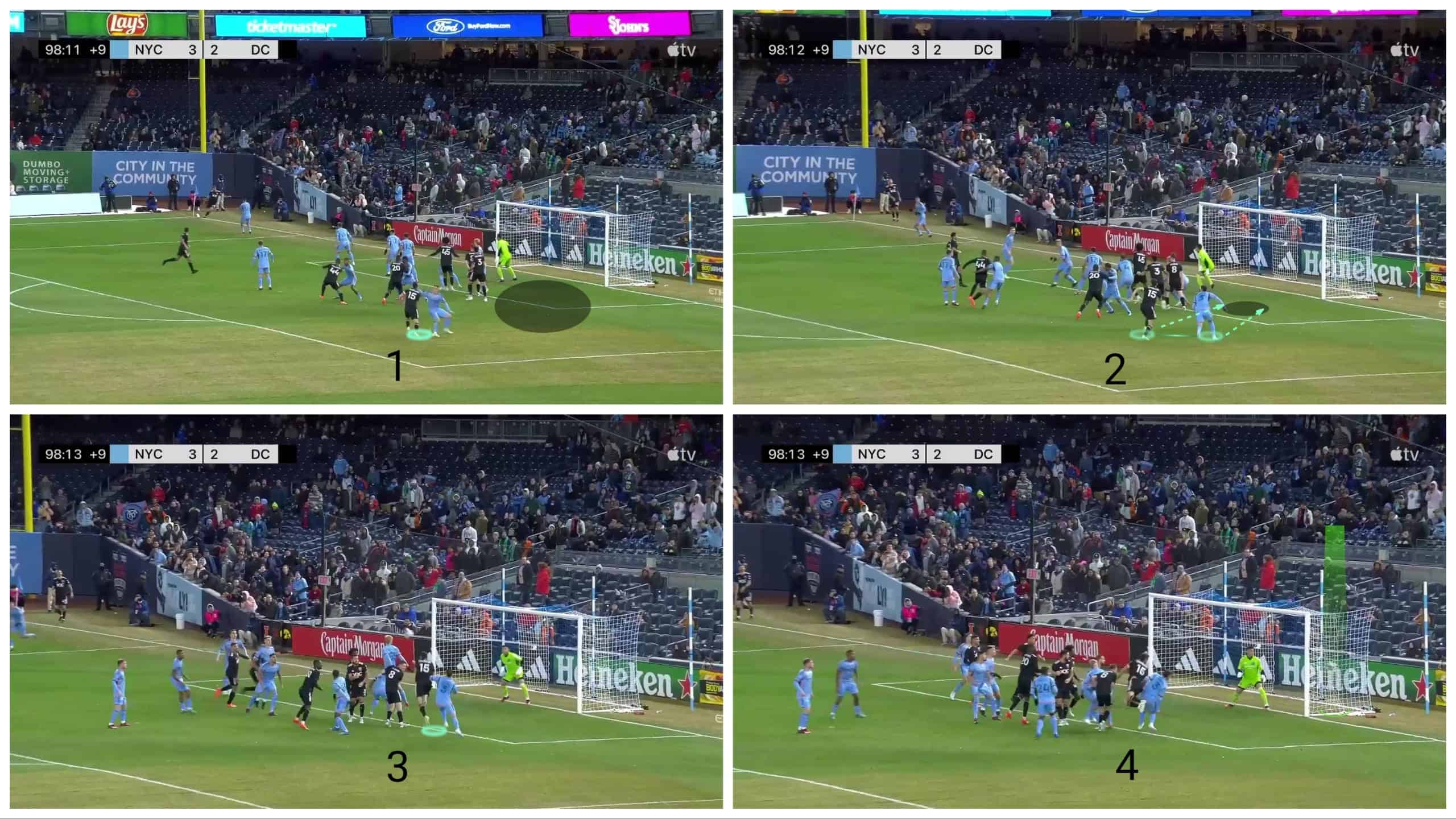
Conclusion
This analysis has shown the most important ideas of Wayne Rooney’s side in the attacking corners and how diverse and influential they are despite their simplicity.
This set-piece analysis shows their exploitation of packs and stacks to make their most important players escape man-marking by using blocks. They also prefer to use floated crosses to allow their distinguished players to estimate the ball in the air and jump from a movement position, making it more difficult for the defenders.





Comments